Diamonds show Earth still capable of 'superhot' surprises
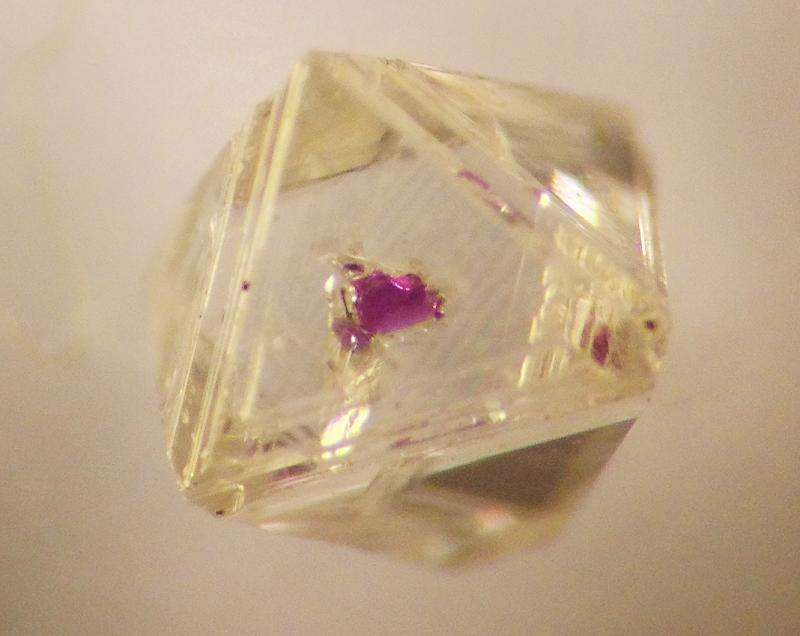
Diamonds may be 'forever,' but some may have formed more recently than geologists thought. A study of 26 diamonds, formed under extreme melting conditions in the Earth's mantle, found two populations, one of which has geologically 'young' ages. The results show that certain volcanic events on Earth may still be able to create super-heated conditions previously thought to have only existed early in the planet's history before it cooled. The findings may have implications for diamond prospecting.
Diamonds can be categorised by their inclusions: minerals trapped within the carbon crystal structure that give clues about the conditions and the rocks in which they formed. The studied diamonds contain harzburgitic inclusions, a type of peridotite ‒ the most common rock in Earth's mantle ‒ which have experienced extreme temperatures and undergone very large amounts of melting.
The study led by researchers at the Vrije Universiteit (VU) Amsterdam used radioisotope analysis to date tiny inclusions trapped in diamonds from the Venetia mine in South Africa. Results showed that the diamonds had formed in at least two separate events. Nine of the diamonds had an age of around 3 billion years, and could be linked to volcanism caused by the break-up of an old continent that led to large-scale melting. However, surprisingly, ten diamonds were dated as just over a billion years old, correlating with a giant volcanic event at Umkondo in southern Zimbabwe, 1.1 billion years ago.
"Conventional thinking has been that the level of melting needed to create these diamonds could only happen early in the history of the Earth when it was much hotter. We show that this is not the case and that some harzburgitic diamonds are much younger than assumed. We propose that our younger set of diamonds formed in a special environment where a major plume from the deep mantle was raised towards the surface and underwent extensive melting as the pressure reduced," said Janne Koornneef, who led the study, published today in Nature Communications.
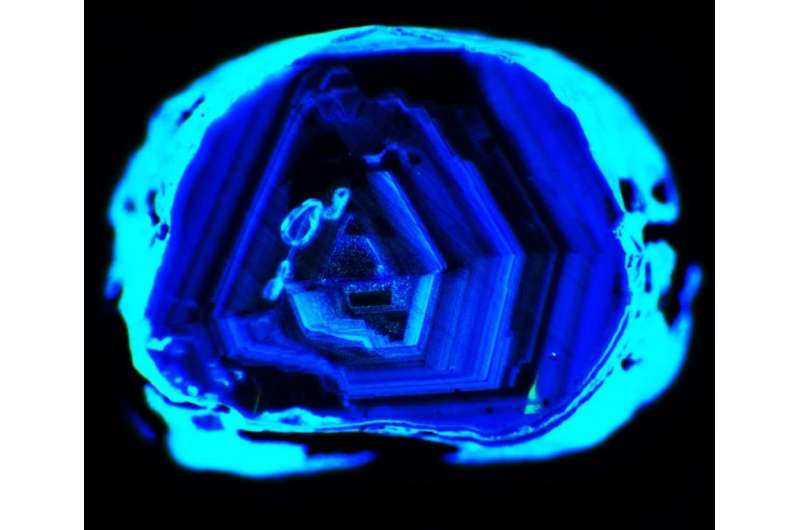
Gareth Davies, co-author of the study, commented, "This is a fascinating insight into the inner workings of planet Earth. While young diamonds are formed in other types of rocks and conditions in the mantle, it's very unexpected to find harzburgitic diamonds linked to relatively recent geological activity. As harzburgitic rocks are important markers for diamond prospecting, the findings may have implications for the geological environments where we look for new diamond mines."
The analysis of the diamonds at VU Amsterdam was funded by Europlanet 2020 Research Infrastructure and the research was funded by the European Research Council. The De Beers Group of Companies donated the diamonds used in this study.
-
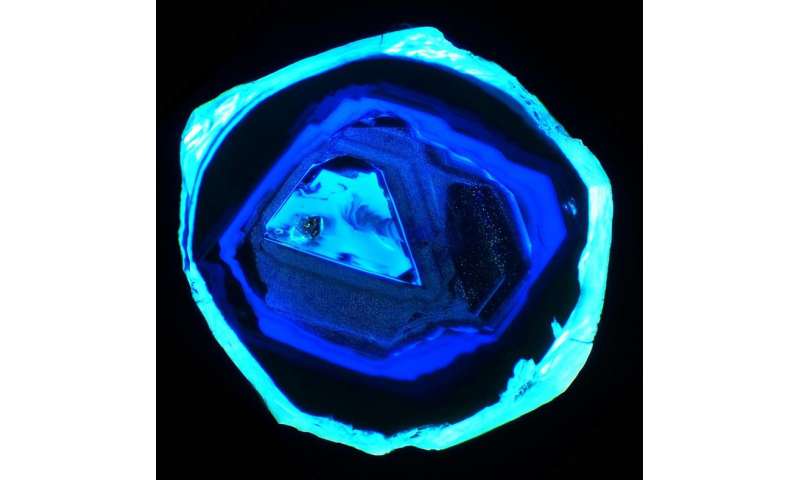
Cathode luminiscence (CL) image of a polished diamond plate revealing the diamond’s growth history and showing the locality of mineral inclusions to be dated. Credit: Michael Gress -
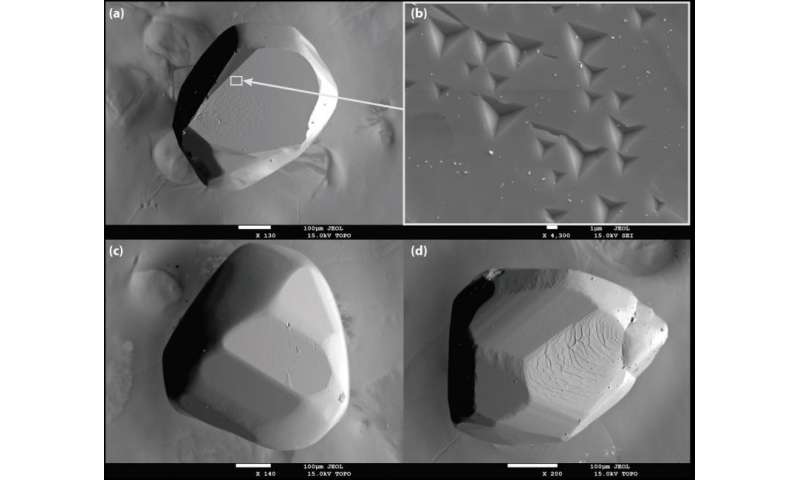
Electron microprobe images of inclusions. (a, c) show diamond imposed cubo-octahedral morphology. The surface of V471 (b) has trigonal features that establish that the inclusion and host diamond formed simultaneously. The top surface of V405 (d) records stepped features and the side faces show well developed growth lines consistent with simultaneous growth with the host diamond. Credit: Koornneef et al -
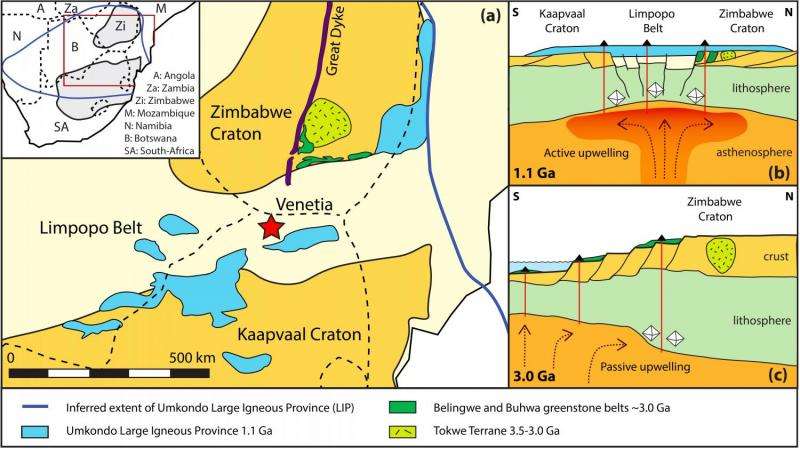
Simplified geological map and cross-section cartoons. (a), (b), and (c) show the inferred relation between magmatic rocks in the region that result from large scale tectono-magmatic events, and the diamond growth events as recorded by the garnet inclusions in diamonds from Venetia (red star). Dashed black lines in (a) are international boundaries. (b) shows the formation of the diamonds dated 1.1 billion years through active upwelling of a plume of the hot, deep mantle. (c) shows the formation of the diamonds circa 3 billion years ago through passive upwelling associated with continental rifting. (b) and (c) are not to scale. Outlines of Umkondo outcrops after Hansen et al. Credit: Koornneef et al
More information: Janne M. Koornneef et al. Archaean and Proterozoic diamond growth from contrasting styles of large-scale magmatism, Nature Communications (2017). DOI: 10.1038/s41467-017-00564-x
Journal information: Nature Communications
Provided by Europlanet


















